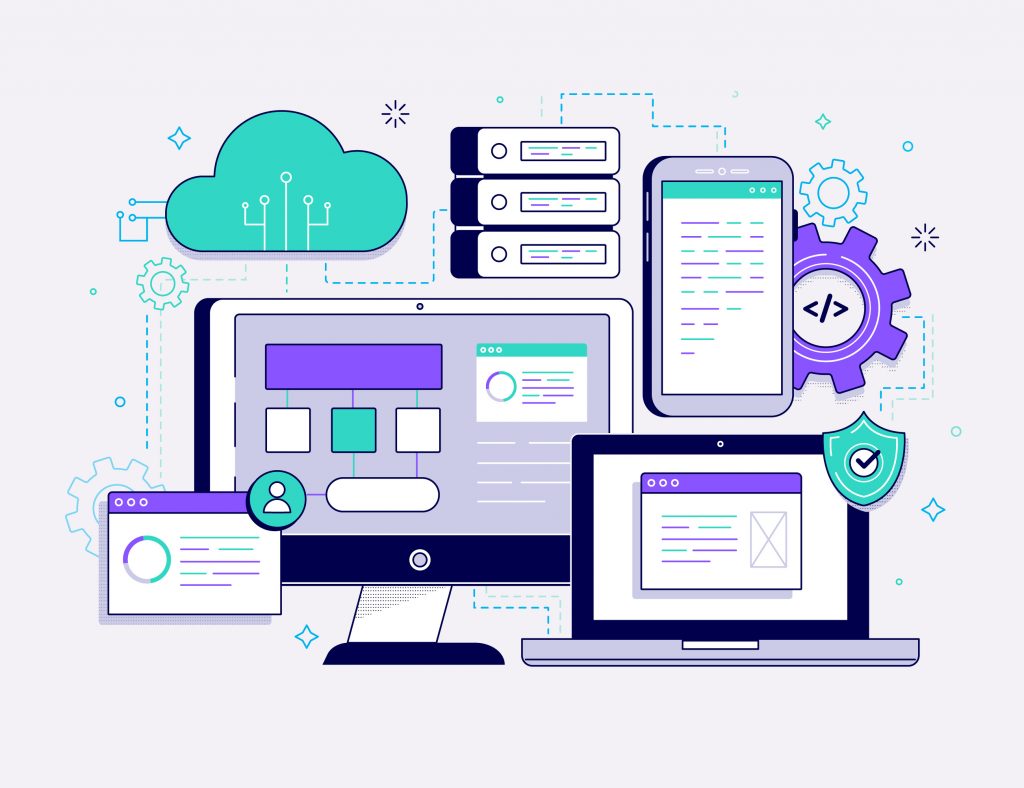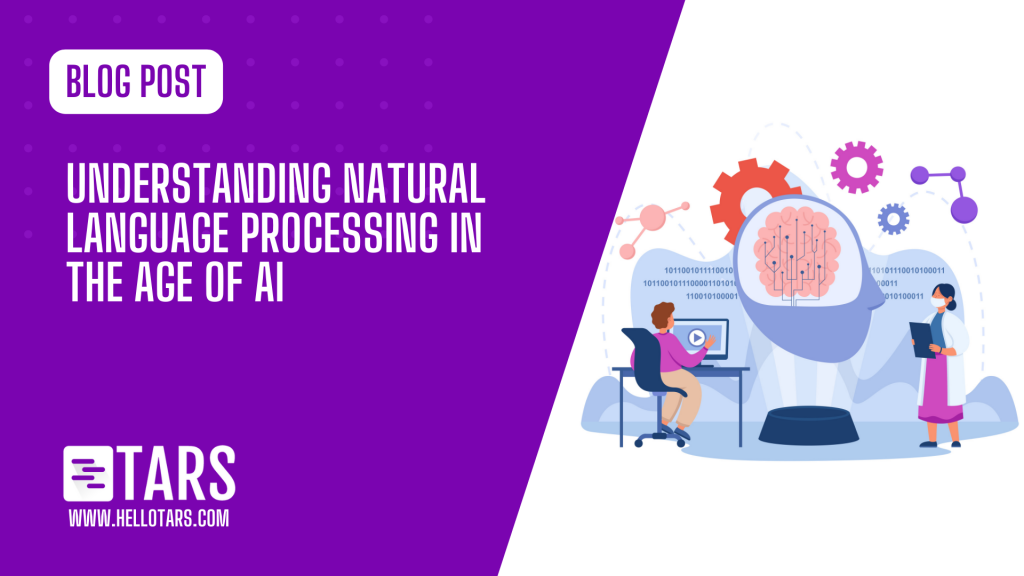The Age of AI has brought about remarkable advancements in various fields, and one of the key areas that has witnessed significant growth is Natural Language Processing (NLP). In this blog post, we will delve into the intricacies of NLP and explore its importance in the Age of AI. So, let’s embark on a journey to understand how NLP plays a crucial role in enabling machines to comprehend and interpret human language.
What is NLP?
NLP, a subfield of artificial intelligence, focuses on bridging the gap between human language and computer understanding. It involves the development of algorithms and techniques that allow computers to process, analyze, and generate human language in a meaningful way. In the Age of AI, NLP has become a pivotal component in various applications and technologies that rely on language interactions.
Applications of NLP in the Age of AI

NLP has found diverse applications, revolutionizing the way we interact with machines and improving our daily lives. Let’s explore some of the key applications that leverage NLP capabilities:
1. Sentiment Analysis: In the Age of AI, understanding human emotions and opinions is vital. Sentiment analysis, powered by NLP, enables machines to comprehend and analyze the sentiment behind written text or spoken words. This analysis helps businesses gain insights into customer feedback, social media sentiment, and public opinion.
2. Chatbots and Virtual Assistants: NLP empowers chatbots and virtual assistants to engage in human-like conversations. By understanding user queries and providing relevant responses, these AI-powered assistants offer enhanced customer support, personalized recommendations, and streamlined interactions in various industries.
3. Information Extraction and Text Summarization: With the ever-growing volume of digital information, NLP techniques help extract valuable insights from unstructured data. Information extraction algorithms analyze text documents to identify entities, relationships, and key information. Text summarization algorithms condense lengthy documents into concise summaries, enabling efficient information consumption.
4. Language Translation: Breaking down language barriers is a significant achievement of NLP in the Age of AI. Machine translation algorithms utilize NLP techniques to translate text or speech from one language to another, facilitating global communication and fostering cultural exchange.
5. Voice Assistants: NLP enables voice assistants like Siri, Alexa, and Google Assistant to understand and respond to voice commands. By leveraging NLP algorithms for speech recognition and natural language understanding, these assistants provide hands-free access to information, entertainment, and smart home control.
NLP Techniques and Algorithms

To accomplish its objectives, NLP employs various techniques and algorithms. Here are some key ones:
✅Tokenization: Tokenization involves breaking down text into individual words or phrases called tokens. This technique forms the foundation for subsequent NLP analyses.
✅Part-of-Speech Tagging: Part-of-speech tagging assigns grammatical tags to each word in a sentence, indicating its role (noun, verb, adjective, etc.). This information aids in understanding sentence structure and context.
✅Named Entity Recognition: Named Entity Recognition (NER) identifies and categorizes named entities such as names, organizations, locations, and dates within text. NER algorithms are crucial in information extraction and understanding relationships in documents.
✅Sentiment Analysis: Sentiment analysis algorithms determine the sentiment or emotional tone expressed in text, helping businesses gauge customer satisfaction, public opinion, and brand sentiment.
✅Topic Modeling: Topic modeling techniques uncover the main themes or topics present in a collection of documents. These algorithms analyze the patterns and associations between words to identify dominant topics.
✅Word Embeddings: Word embeddings represent words as high-dimensional vectors, capturing their semantic relationships. These vector representations enable machine learning models to understand the meaning and context of words within a given context.
Challenges in NLP

While NLP has made remarkable progress in the Age of AI, it still faces several challenges that researchers and developers are actively working to overcome. These challenges include:
🟩Ambiguity and Context Understanding: Human language is inherently complex, often ambiguous, and heavily reliant on context. NLP systems struggle to accurately interpret nuances, figurative language, and context-dependent meanings, presenting a challenge for achieving high-level language understanding.
🟩Multilingual and Cross-cultural Challenges: NLP techniques need to adapt to the rich diversity of languages and cultural nuances. Translating idiomatic expressions, preserving cultural context, and addressing language-specific challenges pose hurdles in developing effective NLP solutions.
🟩Handling Slang, Jargon, and Colloquial Language: Informal language, slang, and jargon are prevalent in everyday communication. NLP systems need to be trained to understand and process these variations to accurately interpret and generate human-like responses.
🟩Dealing with Large-scale Data and Computational Requirements: NLP often requires processing vast amounts of textual data, which can be computationally intensive. Efficient algorithms and scalable infrastructure are essential to handle the growing data volumes and deliver real-time results.
Future Trends in NLP

The future of NLP in the Age of AI holds exciting possibilities. Here are some emerging trends that are shaping the future of NLP:
✅Advances in Deep Learning and Neural Networks: Deep learning techniques, such as recurrent neural networks and transformer models, have significantly advanced NLP capabilities. Further advancements in neural architectures and training methods will unlock more sophisticated language understanding and generation.
✅Integration of NLP with Other AI Technologies: Combining NLP with computer vision, speech recognition, and other AI domains will enable more comprehensive and multimodal understanding. This integration will pave the way for more immersive and interactive AI experiences.
✅Improved Language Understanding and Context Awareness: Future NLP models will strive to understand language in a more contextual and nuanced manner, enhancing their ability to interpret subtle meanings, intent, and sentiment.
✅Personalized NLP Solutions for Individuals and Industries: NLP systems will become increasingly tailored to individual users and industry-specific needs. Customized models and domain-specific language models will provide more accurate and contextually relevant results.
✅Ethical and Responsible Use of NLP in AI Systems: As NLP becomes more pervasive, ensuring ethical use and mitigating bias will be critical. Efforts to promote fairness, transparency, and accountability in NLP algorithms and their applications will gain momentum.
Let Us Help You Leverage the Power of AI and NLP.
At TARS we believe in making AI more accessible for everyone. We can help you design AI bots from scratch or you can simply generate multiple AI bots within minutes with Tars Prime.
Simply book a free demo and our expert team will explain the entire process and help you get started.
You can also try out Tars Prime by yourself here 👉 Try Tars Prime

My name is Vinit Agrawal and I am the Founder and CTO of Tars. I have been working on the Tars Chatbot Builder since 2015 and my core strength is in building software products with simple and functional user experiences focusing on bringing some core business results. My current role in the company is a mix of Product Manager, Engineering Manager and in Business & Marketing Strategy.

0 Comments on "Understanding Natural Language Processing in the Age of AI"